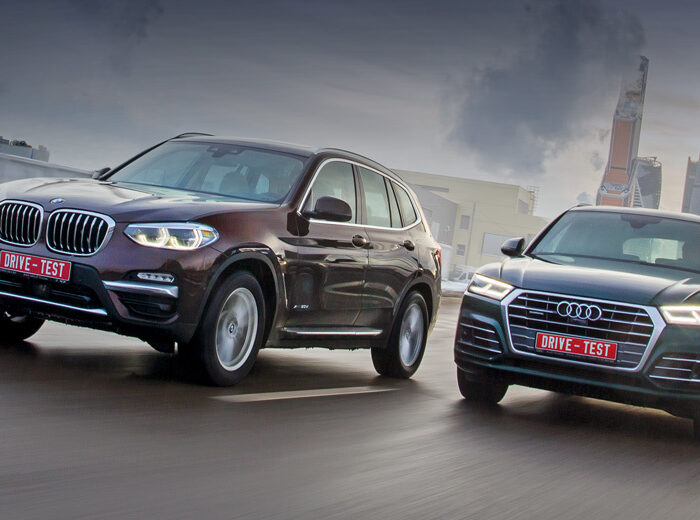Citroën BX vs Peugeot 405: Tale of a Timeless French Classics — Chapter 2
As the years go by, nostalgia grows, but memories sometimes begin to fade. In this chapter, we delve deeper into the stories that some of our authors can recall about the French 80s legends – Citroën BX vs Peugeot 405. These iconic vehicles from the golden era of French automotive engineering continue to captivate enthusiasts with their unique charm, innovative features, and timeless design.
Mikhail Podorozhansky
A landmark car, especially for me: my first, and completely new in every sense – just after the facelift! – foreign car. Paying around 14 thousand dollars for it in Moscow, I, deeply immersed in the hustle and bustle, asked Sergei – a bright memory! – Voskresensky to bring the car from Minsk. Yes, “self-pickup” was a common practice for the first official dealers back in those years! And you know what determined the choice? Also a common practice of those years: an article in my favorite AvtoReview! And it didn’t matter that I wrote that article myself – based on the results of my first “business trip” to France. And when Znamensky offered me to take a ride and refresh my impressions a couple of weeks ago, I naturally declined: “No!” There are no former lovers in the world, just as there is no force that would make me, for example, down a bottle of Agdam in the hallway for two or three, even though I am still ready to sing-play a simple D-major country song from the late seventies: “If only I had forty-seven rubles, oh-oh, it would be cool altogether…”
It was cool. Absolutely. Without ABS, let alone ESP. From Divakov and the same Voskresensky, I greedily absorbed knowledge about handling; I didn’t miss a single outing to the test track, and suddenly – there it was, the ideal! What feedback through the steering wheel, what intoxicating feeling of confidence – and how easily under the whistle of the tires this confidence slips into recklessness! But for all five years – not a single screw-up, not a single unintentional spin, not a scratch!

Autoreview cover (1992)
The main revelation is, of course, elastokinematics: fantastically accurate, often lifesaving reactions to changes in fuel delivery during turns (read – to changes in vertical load on the rear wheels and their consequent deflection). Yes, later there was the 306th, and the 407th, but there elastokinematic adjustments already turned into a certain obvious, accessible to many value, while in the Peugeot 405, it manifested quietly and precisely when needed most.
By the way, the bigger Peugeot 605 of those times fared worse: due to its greater moment of inertia, the car could easily – and in an instant! – slide into oversteer when lifting off the gas, and a couple of times, before I could even blink, I found myself backwards… And I deserved it: both times I was showing off, but with the Peugeot 405 it was intimate, between us. And the size, by the way, was mine.
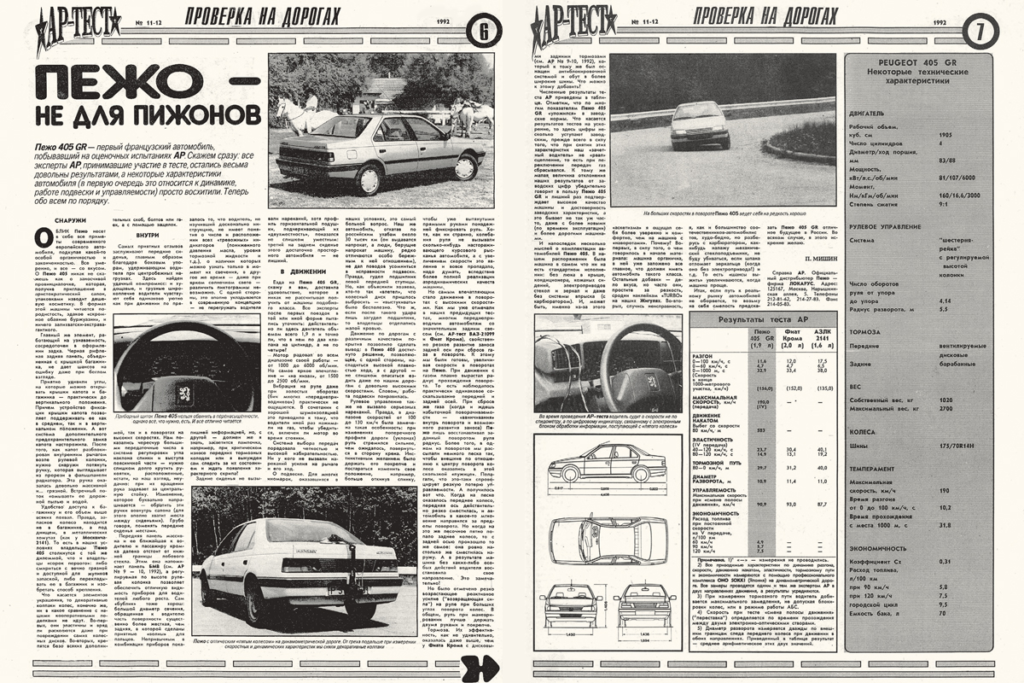
More experienced journalist colleagues from friendly Western countries at that time responded that they experienced such joy earlier: someone – with the legendary Peugeot 205 (it heralded the beginning of the triumph of French suspensions), someone – with the Peugeot 309, but it was a time when the most daring dreams were of the VAZ-2108.
And also, starting with the Peugeot 405, I stopped even considering buying used cars. Let them be cheaper, let them be simpler, but only if they are new, only if they are yours, charged (even infected) only by you. And if I let someone drive it, then not so much for its reliability, but for how much they enjoy it. So I asked Voskresensky to bring the Peugeot from Belarus… Although it couldn’t have been more reliable! Maybe that’s why we went so fast and happily.
I’m afraid to read what Znamensky and his friends will write about the Peugeot 405. But still, I’m curious, will they notice that on gentle waves at about 140-145 km/h there is still a discrepancy in the work of the suspension and steering – and the car slightly sways? Although, as I suspected back then, this is a consequence of the “front adaptation” in the form of an increased one-inch ground clearance. Of course, I’ll read it, but behind the wheel in a quarter of a century – no way!
Andrey Mokhov
Citroen could have been produced in Moscow. Even before its global debut, the French brought the future BX to AZLK and proposed to launch the production of a simplified version with spring suspension, but the parties did not agree on the terms at the time. But later, the BX still ended up at the Moscow plant. In 1983, such a Citroen was bought for comparative tests with the new model 2141 – and to familiarize themselves with the features of French engineering thinking.

Photo 17. Automobile “Citroen BXI6TR S”
AZLK received a hatchback in the form of a 1983 BX 16 TRS, which means a modification from the earliest period with a 1.6-liter engine. It had a dual-chamber Weber 32/34 DRTC carburetor, so the power output was 90 hp. The Citroen at AZLK had rack-and-pinion steering without power assistance, but disc brakes were installed on all wheels. In addition to the hydropneumatic suspension, the BX surprised with a combination of instruments with a drum-style speedometer and an electronic tachometer. And it rode on rare “metric” Michelin TRX tires.

In the 70s, these were some of the first low-profile radial tires, but they differed significantly from ordinary radial tires in sidewall construction and could not be mounted on traditional wheels. To avoid confusion, Michelin produced TRX tires in metric sizes for installation only on special “metric” wheels. Our Citroen then had tires sized 170/65 R365.

Photo 22. Automobile “Citroen BXI6TR S”
The tests in Dmitrov were conducted in full, including acceleration, braking, fuel consumption, external and internal noise, toxicity, visibility, and other parameters. It was found, among other things, that the windshield cleaning area on the Citroen with a single wiper did not meet GOST requirements. And the emissions of harmful substances also exceeded the then parameters, exceeding the norm by one and a half times. But still, it was a car from another universe.
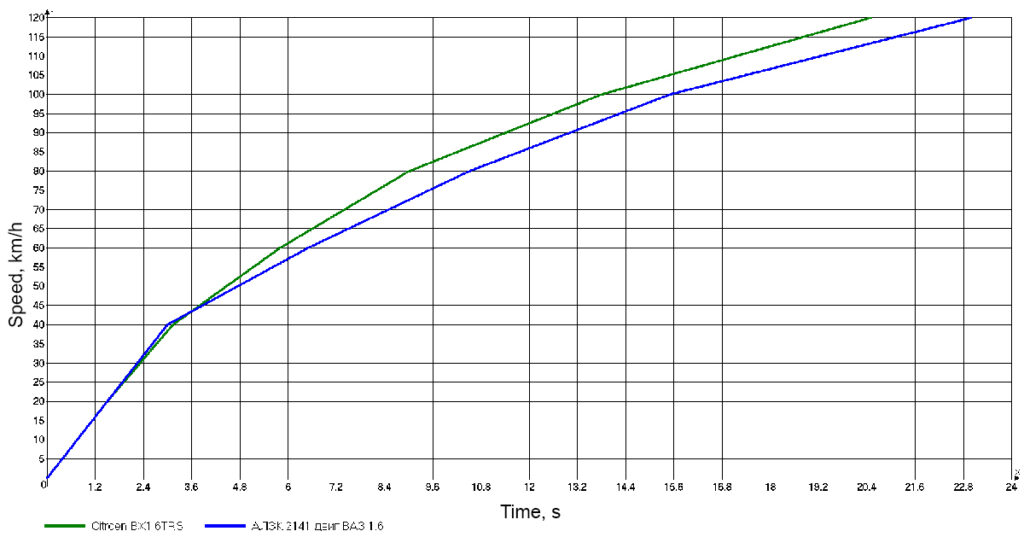
The “Frenchman” with a 1600cc engine at the time accelerated to 100 km/h in 13.8 seconds and managed to reach 167.5 km/h. Unattainable figures for the Moskvich. The “Forty-first” with the Ufa engine barely reached “a hundred” in 21 – twenty-one! – seconds.”

Photo 19. Automobile “Citroen BXI6TR S”
However, the measurements of dynamic characteristics and fuel economy were then carried out with outdated equipment from the NAAMI production, the accuracy of which was not beyond dispute. An electromechanical device like a “fifth wheel” recorded data on a long paper tape, and then engineers had to arm themselves with a ruler and manually translate the curve of the graph into understandable kilometers, seconds, and meters.

Photo 18. Automobile “Citroen BXI6TR S”
After the tests, the Citroen stood in the garage of the AZLK Design and Experimental Works, but at some point the technical director needed to go on a business trip to a neighboring plant – and he took the Citroen for a ride, but never returned it. He drove it, never getting out, turning it into his personal car until closer to the beginning of the 90s, during one of the trips, the suspension sank onto the buffers. The hydropneumatics “deflated”, and the Citroen fell. The cause of the suspension failure was not reliably established at the time, but it was clear that the BX lost a lot of working fluid. At that time, it was only possible to buy it abroad, theoretically it was possible, for example, through the Finnish company Konela. But instead, it was decided to simply fill the Citroen with fluid taken from the ZIL. The result was not long in coming: the BX finally became a joke.
Sergey Znaemsky
Photos by PSA Peugeot Citroen, Iran Khodro, Reliant, and Bertone
Technical standardization? What about shared design? Citroen BX and Peugeot 405 also experienced this in automotive history.
Work on the BX project (the pre-production BX) began in 1977. Citroen did not have a chief designer at the time because the previous head stylist, Robert Opron, declined to work under Peugeot’s leadership and moved to Renault as early as 1974. The new management did not rush to find another head of the styling center. Only in 1982 did they appoint an American, Karl Olsen, to this position. Then, in 1977, the in-house designers began work, using Opron’s ideas.
The initial mock-ups already featured a hatchback with a long nose and a pyramidal silhouette. Yet, the conglomerate management preferred Bertone’s studio to handle the design, with their brilliant Marcello Gandini. However, Gandini was not in a hurry to come up with an original image for Citroen. By that time, he was fascinated by the geometric “origami” style, which he first embodied in the Jaguar Ascot concept car and then in the large hatchback Reliant FW11. Essentially, for the French, the maestro compiled solutions from these cars into a new image that looked avant-garde in Citroen’s style, but stylistically resembled a small five-door Lamborghini.

Jaguar Ascot appeared in 1977 based on the XI-5 coupe

Reliant made the FW11 rear-wheel drive hatchback for the Turkish brand Otosan
Interestingly, angular shapes did not work well for Citroen’s signature streamlined design, so the drag coefficient (Cx) turned out to be even higher than that of the old GS model, which the BX was intended to replace – 0.35 versus 0.318.
But that’s not all. Gandini decided not to stop there, and after the XB design project was approved, Bertone presented its concept cars Fiat X1/10 and Volvo Tundra, which looked like Citroen’s natural siblings. All of them were unveiled before the BX was shown to the world, so the French found themselves in a situation where their newest car turned out to be not only halfway Peugeot inside but also a bit Volvo outside.
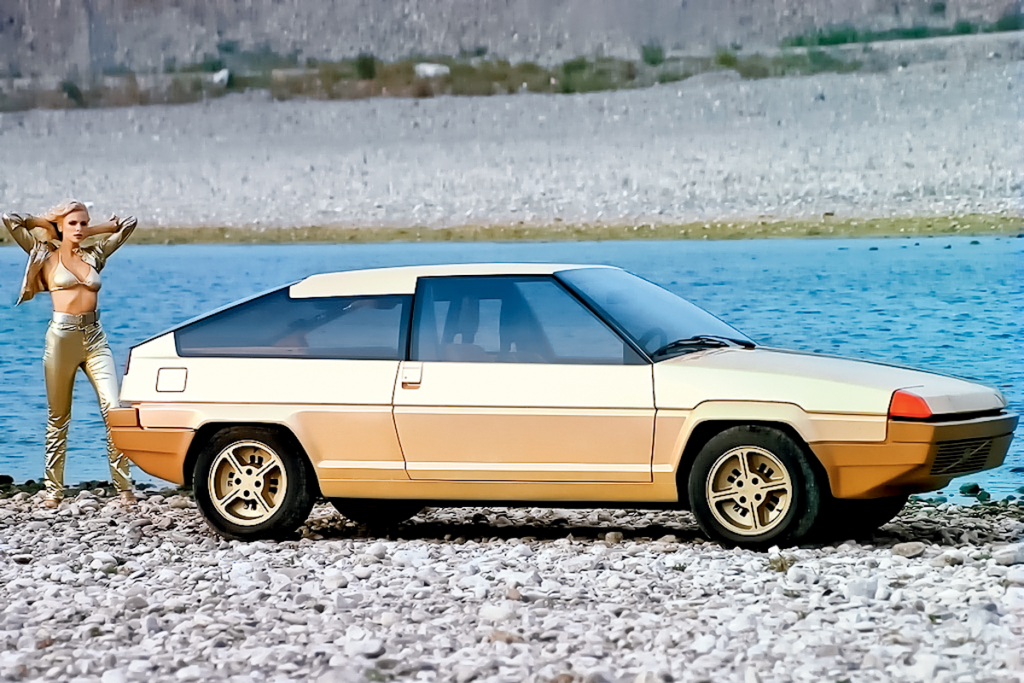
Volvo Tundra concept based on the Volvo 343
Fortunately, these details did not bother real buyers. Especially since the Citroen became the only serial car from this lineup. The finished BX was announced in June 1982 and shown live on September 23 under the Eiffel Tower. By the end of 1983, it stormed into the top 10 of the French car market, and by the end of 1985, it took third place in its homeland, trailing only the super small Peugeot 205 and Renault 5.
In the mid-80s, the normal sales volume of this model was 120,000-125,000 cars per year. And this was only in France. The BX was also produced in Spain and Yugoslavia. Moreover, station wagons were made at a separate French factory owned by Heuliez.

To lighten the body, Citroen used a plastic hood and trunk door. True, it was on the budget version of the BX 15 TGE that for some reason the hood was made of steel. However, even in this case, the curb weight is only 950 kg
Different countries had BX models with petrol engines ranging from 1.1 to 1.9 liters and diesel engines of 1.8 and 1.9 liters. In total, there were nine different units, ranging from 54 to 160 hp. And this does not include the rally version 4TC with a 200-horsepower Simca turbo engine.
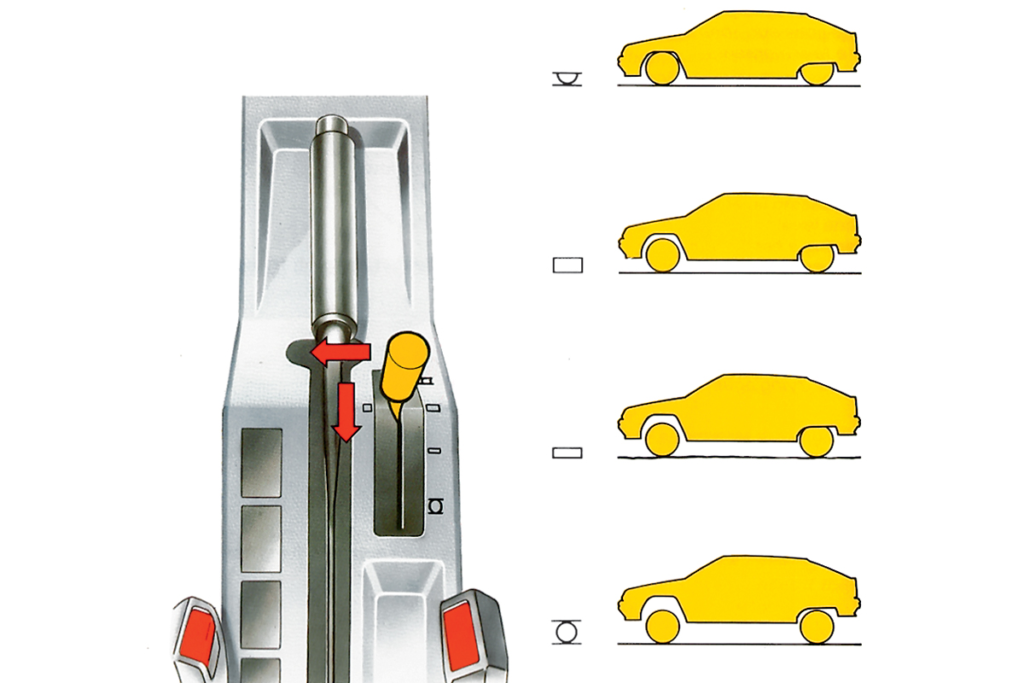
This is how Citroen’s instructions explained the use of four suspension levels. Minimum ground clearance is for parking and servicing only. Normal position (160 mm) – for everyday driving. The middle position (190 mm) is for bad roads. Upper position (235 mm) – for changing wheels and slowly passing extreme obstacles
For regular versions, both manual and automatic transmissions were offered, and from 1988, there was also a four-wheel-drive version BX 4×4 with a mechanical center differential and rear self-locking differential. Moreover, this transmission was compatible with both the standard 107 hp engine in the wagons and the 160 hp engine in the GTI version. But the suspension was always the same – the BX played the role of the youngest hydropneumatic Citroen.
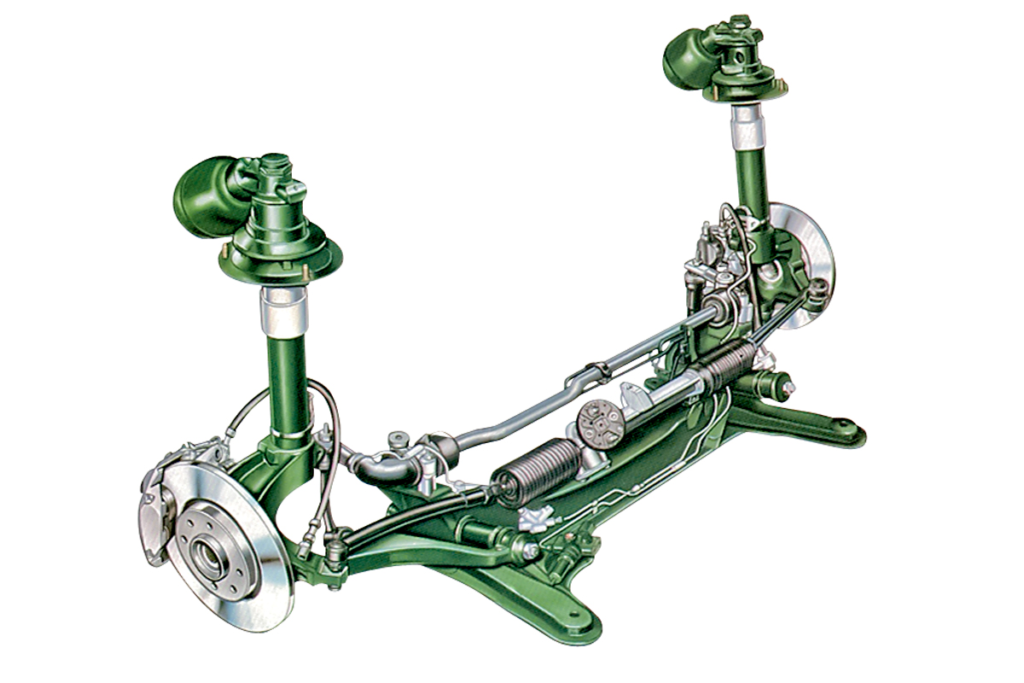
A special feature of the front suspension is elastic rubber supports, which instead of bearings ensure the rotation of the struts. To combat nose-up during acceleration, the struts are installed with a ten-degree forward tilt (positive caster – 2°351)

The rear spheres and hydraulic cylinders are located horizontally and act on independent trailing arms on each side. The gas pressure in the rear spheres is lower than in the front ones –
• 40 bar versus 55 bar. Any BX, unlike the Peugeot 405, was equipped with rear disc brakes
The only serious restyling it underwent was in 1987. Changes almost did not affect the exterior, but transformed the interior, and the ancient engines from the X series disappeared from the engine lineup. These engines combined the engine and transmission in one crankcase (similar to the Mini) and were installed almost horizontally with a tilt of 72 degrees.
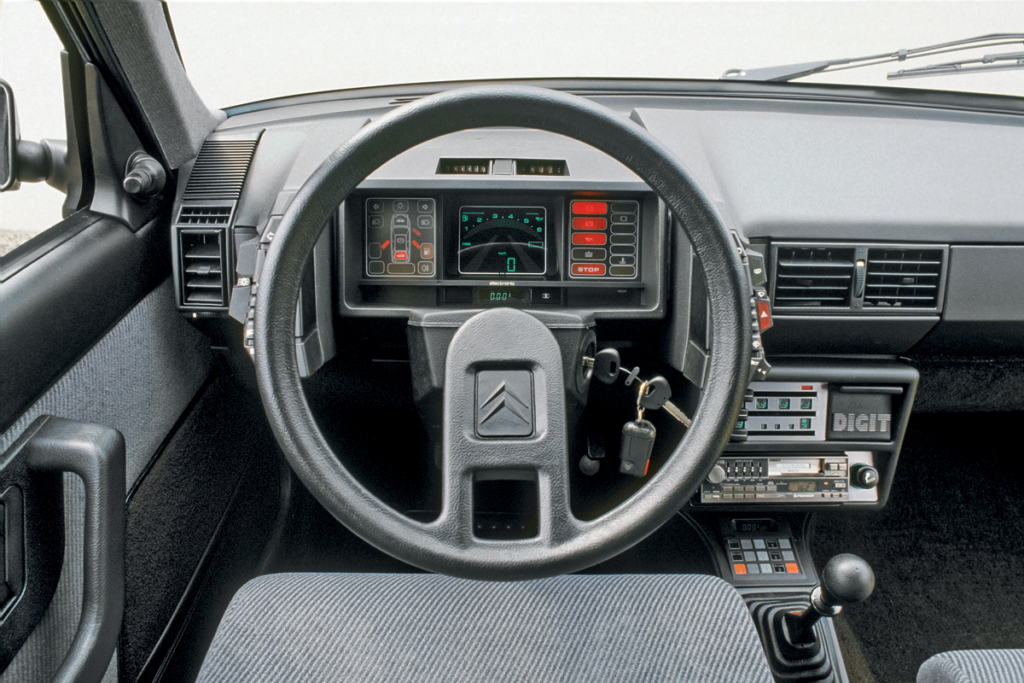
This is what the “electronic” interior of the limited version of BX Digit looked like. In 1985, Citroen produced only 3,000 of these cars.
Hatchback production was phased out in 1993 with the introduction of the Xantia model, but station wagons were made until 1994. In total, 2.3 million units were produced over 12 years – an average of almost 200,000 per year, making the BX one of the most mass-produced Citroens in history.
However, there was one thing that it never achieved. It was the European Car of the Year award. In the year of its debut, the BX “ran into” premieres such as the Audi 100, Ford Sierra, Volvo 760, and remained in their PR shadow. But the platform-sharing Peugeot 405 was much luckier: in 1988, it won the COTY title, competing against the Citroen AX and Honda Prelude.
Contrary to the logic of platform-sharing projects, the development of the Peugeot 405 began only when the BX was already on the assembly line. The conglomerate set the task of developing the “perfect sedan” with advanced fuel efficiency and dynamics.
Peugeot had its own powerful team of designers, including the outstanding exterior designer Gerard Welter, the future creator of the appearance for the 205 model. And the key to the forms of the new sedan was found by Peugeot stylists using the VERA series of aerodynamic concept cars, which began in 1980. But the design competition for the serial version was won by the Pininfarina studio, with which Peugeot had been collaborating regularly for almost 25 years. However, the mishap with the “shared” design repeated itself this time as well.
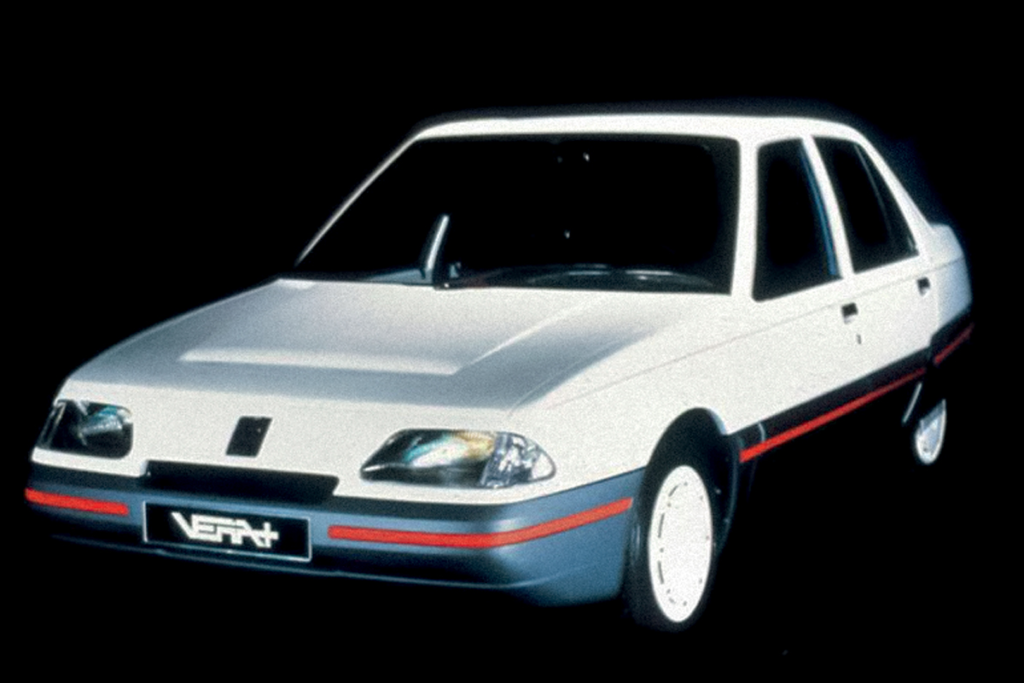
1983 VERA+ concept based on the Peugeot 309
In 1987, the finished Peugeot 405 was presented to the public just a few months earlier than the Alfa Romeo 164 sedan, which was also born from Pininfarina and looked like an enlarged clone of the “four hundred and fifth” in profile. Alfa enthusiasts still believe that they had the original design, and the French got a copy. Still, judging by the VERA+ 1983 concept, the origin of the Peugeot leaves no doubts. Although the Alfa’s design was ready by then too. In short, Pininfarina was working on two projects simultaneously and, apparently, slightly unified the creative processes. Or not slightly, considering that two years later, the Italians also made the 605 sedan for the French with the same outlines. But does all this diminish the beauty of the Peugeot 405?
Initially, the car entered the market only with petrol engines of 1.6 and 1.9 liters and only with a four-door body, but this did not prevent it from gathering accolades from the European press and immediately winning the COTY competition with a result that remains record-breaking to this day – 464 points.
By the way, Peugeot’s driving talents were no surprise, as the “two hundred fifth” was already roaring in Europe, and the 405 used a similar rear suspension. The suspension scheme itself with longitudinal arms dated back to the 305 wagon, but there were horizontal springs, and for the 205 and 405, they were replaced with torsion bars. This recipe was used for compact models up to the release of the 307 family, but the 405 remained the last torsion bar midsize Peugeot, as the 406 model switched to multilink suspension and coil springs.
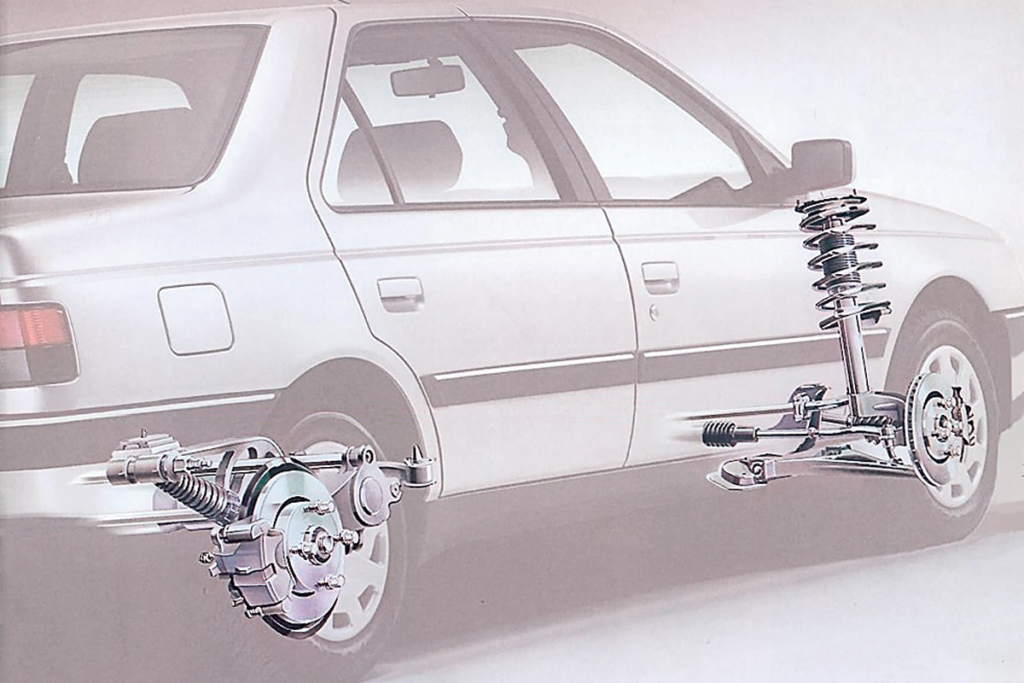
The secret to Peugeot’s handling is an independent rear suspension with trailing arms, torsion bars and almost horizontal shock absorbers
The total number of different engines installed on the “four hundred and fifth” turned out to be even greater than that of Citroen – 12 engines. This includes TU series engines, with which the French were the first to master the production of gasoline engines and diesels with a common cylinder block.

After restyling in 1992, the Peugeot 405 received a new interior, front armrest, rear armrest and three-belt sofa. The rear optics received tinted sections. The rigidity of the body has increased, and it has become possible to lower the trunk threshold to the bumper
The new Peugeot sold best in France, of course. And although it never made it into the top three bestsellers, the average sales volume in the late 80s was higher than that of the Citroen BX – 130,000-145,000 cars per year. The UK was the second most important market (40,000-50,000 cars per year), and Peugeot 405 was still being exported to the US until 1991.
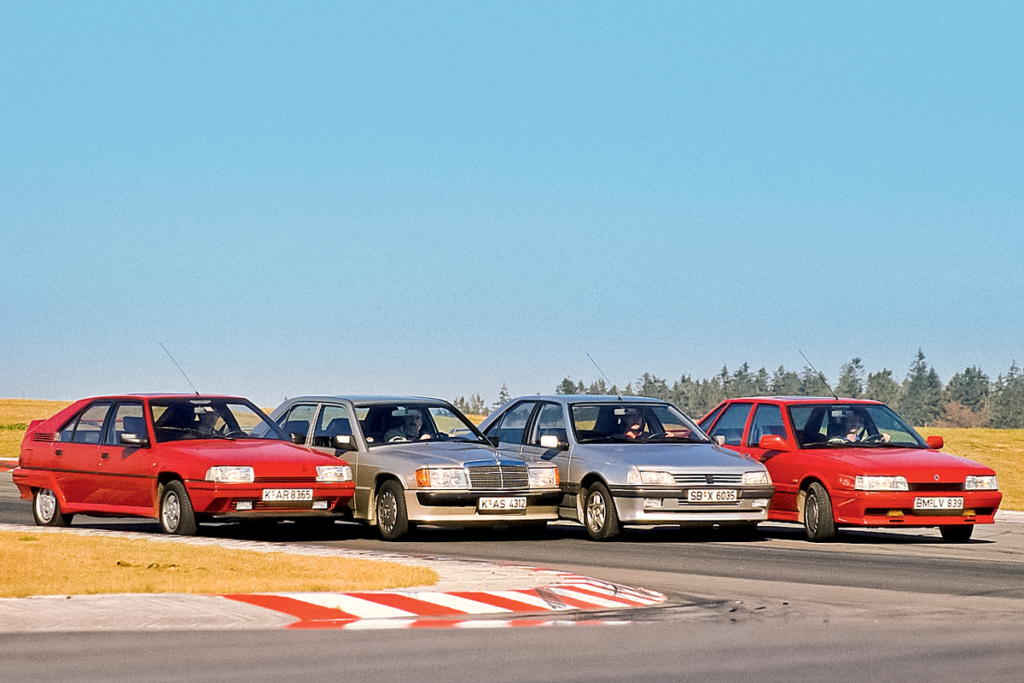
In the late 80s, European journalists seriously compared the “hot” driver’s cars Citroen BX GTI, Peugeot 405 Mi-16, Renault 21 Turbo and Mercedes-Benz 190E 2.3-16
But in the 90s, its popularity began to decline even in Europe, despite a series of facelifts. Nevertheless, over 11 years, a total of 2.5 million “four hundred and fifth” were produced. And in reality, the story of this car continues to this day, as Iran Khodro bought a license from the French in the 90s and today offers both the Peugeot 405 in almost its original form and numerous proprietary models based on this sedan under the names Samand, Soren, and Dena.

A modern booklet from Iran Khodro offers to purchase a brand new Peugeot 405 SLX with a TU5 engine (1.6 l, 105 hp), ABS and two airbags
Photo: Dmitry Pitersky
This is a translation. You can read an original article here: Экономагия: Citroen BX против Peugeot 405 (+ воспоминания Подорожанского и Мохова)



